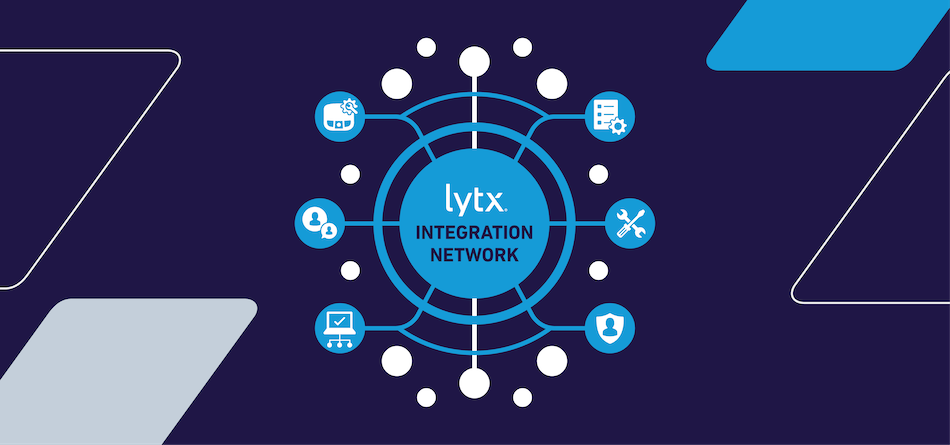All the Ways You’re Missing Out with Unconnected Data

When we talk about data that’s unconnected, we mean information generated across various systems, devices, or processes that is not integrated or centralized. In field service fleets, this could include video safety data, GPS data, vehicle diagnostics, work orders, driving behavior metrics, and customer information that exist in separate platforms or are not synchronized.
Why should you care about your data being unified or not? Well, unconnected data has huge downsides that can leave you open to big risk and unwanted costs that you can’t even see. On the other side of the coin, connecting your data has massive upsides that can result in cost savings, safety benefits, efficiency opportunities, and more.
Downsides of unconnected data
Higher than necessary operating costs
- Manual data compiling and analysis: Using team members to manually input and analyze data diverts their efforts from more critical business operations.
- Overlapping tools: Multiple unconnected tools can lead to overlapping functionalities and unnecessary costs.
- Higher maintenance costs and vehicle downtime: Without integrated data, field service companies struggle to monitor vehicle performance and identify maintenance needs proactively. Unconnected data also hinders the ability to predict and address vehicle issues before they escalate.
Increased risk and liability
- Safety risk: A lack of unified data on driver behavior, vehicle conditions, and field operations makes it harder to identify and mitigate safety risks.
- Risk of vehicle misuse: Unconnected systems make it challenging to monitor and control vehicle usage in real time.
- Decisions with partial data: Unconnected systems limit access to comprehensive, real-time insights, forcing decisions to be made with incomplete or outdated information.
Suboptimal volume of jobs per day
- Inefficiency and underutilization of vehicles: Disconnected systems prevent field service companies from optimizing routes, resource allocation, and service deliveries.
- Inability to respond quickly and stay on schedule or add extra jobs or deliveries: When data is siloed, field service teams lack the agility to adapt to disruptions, such as weather, traffic, or emergency service requests.
How connecting data can solve these challenges
There are so many great benefits that come from using a system that connects safety solutions, fleet tracking, and DVIR. Using APIs and integrations can take it a step further to help reduce costs, deploy resources more wisely, and ultimately open opportunities to complete more jobs in a day. When all these tools are used in tandem, they help you:
- Reduce busywork and focus your resources on more important tasks
- Eliminate the need to juggle multiple systems, so you can better utilize the tools and data you already have
- Keep control of where and how your data is used
- Supercharge your existing video solutions by combining critical data with the power of video
Check out these success stories and how they showcase the huge upsides to connected data.
Find new efficiencies with automatic data input and flow of information
Lytx® client Beacon Mobility offers mobility services for school districts, special education programs, charters, and more. Their data integration efforts have been critical to reduce inefficiencies. Gaurav Sharda, Beacon Mobility’s Chief Technology Officer, explains how connecting data helps reduce resource burdens caused by manual data processing.
“We were in a situation where we were manually keying employees,” said Sharda. “It's okay when you are a few hundred employees. But we got to a stage where it's just not possible to keep up with the manual entries of employee data into the systems that we integrate with.
We ended up creating an integration between Workday and Lytx to feed over the employee information on a real-time basis. So, whenever a new employee gets hired in Workday, it flows over to Lytx. Whenever an employee changes locations, if the person goes from location A to location B, that also cascades down.
This ends up putting the right set of information into Lytx to ensure that our safety people are able to coach and educate the drivers in the right manner. Because if you don't have the employee information, you'll have these events where there are no people assigned. [Unconnected data] ends up creating a lot of manual work for the safety people to just try to find the drivers. And it takes away their time from coaching people and spending time with them. Instead of that, they're focusing time in the system. So, we want them to use the data to make that impact and to create the culture of safety. So that's why that integration between Workday and Lytx is very critical.”
This ends up putting the right set of information into Lytx to ensure that our safety people are able to coach and educate the drivers in the right manner.
Eliminate redundant tech solutions
Integrations allow you to do more with the data you have. So rather than investing in an entirely new tech partner, you can bring together the data and investments you already have. This is a cost saving way for fleets to create an all-in-one solution that works for their unique needs.

Fleet data from ECM, various APIs, and DVIRs can help reduce costs through preventative maintenance
Beacon Mobility was able to bring vehicle data together to ensure better maintenance and a higher quality of vehicle safety.
“We used to have to extract how many miles were getting driven, from each of the vehicles through multiple different sources. And there were people coalescing all the data into Excel spreadsheets and putting that together,” said Sharda.
“Now we’re using the Lytx mileage information API which makes mileage data available. The logic which is built into it is top notch. We get the information of how many miles are driven from a GPS perspective on a daily basis through Lytx. It ends up creating accurate and timely information which leads to better PM maintenance for our fleet and ensures that all of our vehicles are in the safest condition possible for our passengers and drivers to ride on a daily basis.
The mileage information is critical in two aspects. It ends up saving a lot of time for our support functions where they don't have to pull data into Excel and then push it out manually to people. It's automated. And secondly, the timely and accurate information results in better PM compliance for our fleet.”
It ends up creating accurate and timely information which leads to better PM maintenance for our fleet and ensures that all of our vehicles are in the safest condition possible for our passengers and drivers to ride on a daily basis.
Clients can solve for this challenge of Excel spreadsheet overload is by leveraging DVIR. It keeps inspections streamlined, digitized, and actionable, eliminating the need for this kind of manual effort that is often error prone and time consuming. Lytx client Snider Fleet Solutions explains how DVIR helps make their organization run smoother.
“Lytx DVIR gives visibility to the condition of our fleet, in real time, from the ground up, all the way to the executive level,” said Tony Mullen, Risk and Safety Manager at Snider Fleet Solutions. “It assures us that defects and safety issues are corrected before they become major issues, resulting in a greater loss or expense.”
Lytx DVIR gives visibility to the condition of our fleet, in real time, from the ground up, all the way to the executive level.
Reduce safety incidents by combining video safety with fleet tracking
Beacon Mobility places safety above all other priorities, and they found ways to make their drivers even safer through data integrations.
“There's a much greater value beyond the DriveCam® device’s live feedback mechanism. We get additional benefits from the metrics that are gathered,” said Kevin Kilner, Beacon Mobility’s Chief Safety Officer. “We know where we have pockets of speeding issues, failure to stop, or maybe some distracted driving. So, as a starting point, we can start to answer things like where is this happening and perhaps understand if it’s a regional issue within a certain city, state or roadway. We can take these metrics and drill down, which helps us support those teams and provide them with sustainable solutions.”
There's a much greater value beyond the DriveCam® device’s live feedback mechanism. We get additional benefits from the metrics that are gathered.
Increased customer satisfaction by combining fleet tracking with dispatch via APIs
On top of their other integrations like Workday, Beacon Mobility also leverages the ByteCurve integration with Lytx to help make data-driven decisions faster. Beacon uses Lytx GPS webhook and GPS API to pull fleet tracking data, which is then pushed into ByteCurve for two main purposes: dispatching and verification with near real-time GPS updates for ByteCurve’s parent tracker. This allows parents to stay in the know in real time, minimizing calls to Beacon’s dispatch center, and increasing the overall technology experience for all users.
Better respond to ever changing conditions in the field with telematics
Beacon’s need to track vehicles in their daily journey is critical, and with unpredictable conditions around every corner, having real-time data is key.
“There are a lot of times where there might be traffic conditions or buses are running late for whatever reason, then we get a lot of phone calls from our parents to say, ‘Hey, where is the bus?’ They're expecting their kid to be picked up at a certain point in time,” notes Sharda.
“But using that ten second GPS information, it enables us with the information to share where the vehicle is in the moment. We can then provide that cell service to our parents, to our school districts, and to our dispatchers to be able to answer that question. Versus, if they don't have visibility, the only option they have is if somebody calls in to ask. In that case, the dispatchers will have to radio into the driver and they ask them what's happening with this bus and where they are.
It creates a lot of distraction for the drivers when you're talking to them over radios in the vehicle. Now, instead of doing that, they have information available at their fingertips from a dispatch perspective, from a customer standpoint, and from a parent perspective. It eliminates hundreds of phone calls across our hundreds of locations on a daily basis. And it ends up saving a lot of time and creates that best-in-class experience.”
As illustrated in these success stories, new layers of resource savings and efficiency wins can be revealed by connecting Lytx telematics with your Driver Safety Program and leveraging APIs where needed. When you bring all these data sources and solutions under one umbrella, the benefits are virtually endless.
You can learn more about the benefits of adding fleet tracking and DVIR to your existing Driver Safety Program, explore the Lytx Integration Network to get more details on integrating your existing vendors, or contact your sales team to get the conversation started.
